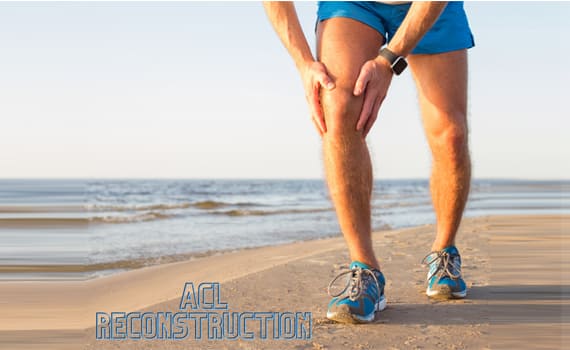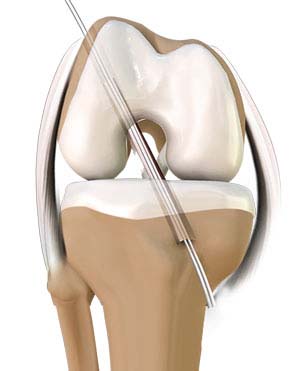The surgery can usually be performed as an outpatient procedure, which means you may be discharged to go home on the same day as the procedure.
Anterior Cruciate Ligament Tears
The anterior cruciate ligament (ACL) is one of the major stabilizing ligaments in the knee. It is a strong rope-like structure located in the centre of the knee, running from the femur to the tibia. When this ligament tears, unfortunately, it does not heal on its own, and often leads to the feeling of instability in the knee.
Causes of an ACL Injury
An ACL injury most commonly occurs during sports that involve twisting or overextending of your knee. An ACL can be injured in several ways:
- Sudden directional change
- Slowing down while running
- Landing incorrectly from a jump
- Direct blow to the side of your knee, such as during a football tackle
Symptoms of ACL Injury
When you injure your ACL, you might hear a loud "pop" sound and may feel the knee buckle. Within a few hours after an ACL injury, your knee may swell due to bleeding from vessels within the torn ligament. You may notice that the knee feels unstable or seems to give way, especially when trying to change direction on the knee.
Diagnosis of an ACL Injury
An ACL injury can be diagnosed with a thorough physical examination of the knee and diagnostic tests such as X-rays, MRI scans and arthroscopy. X-rays may be needed to rule out any fractures. In addition, your surgeon will often perform the Lachman’s test to check if the ACL is intact. During a Lachman test, the knee with a torn ACL may show increased forward movement of the tibia, and a soft or mushy endpoint compared to a healthy knee.
Pivot shift test is another test to assess ACL tears. During this test, if the ACL is torn, the tibia will move forward when the knee is completely straight and as the knee bends past 30° the tibia shifts back into the correct place in relation to the femur.
If you would like to have additional information on ACL injury treatments or would like to learn more about ACL Reconstruction, please contact Mr. Singh at his clinics in London, Cambridge, Hertfordshire, or Peterborough.
Related Topics:












